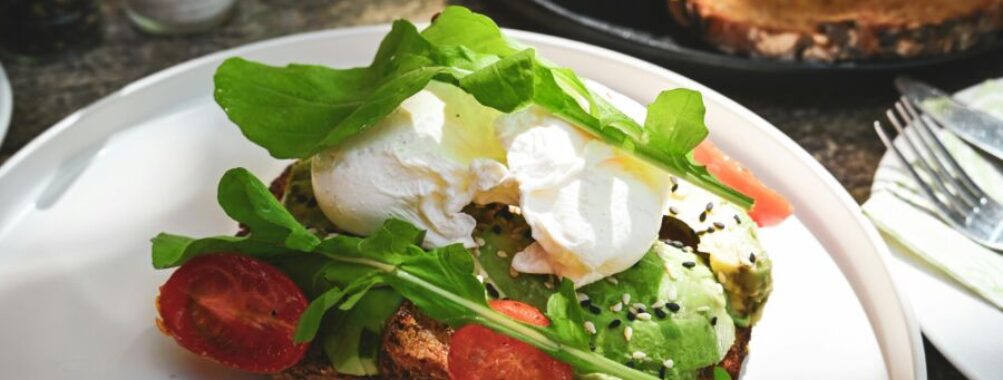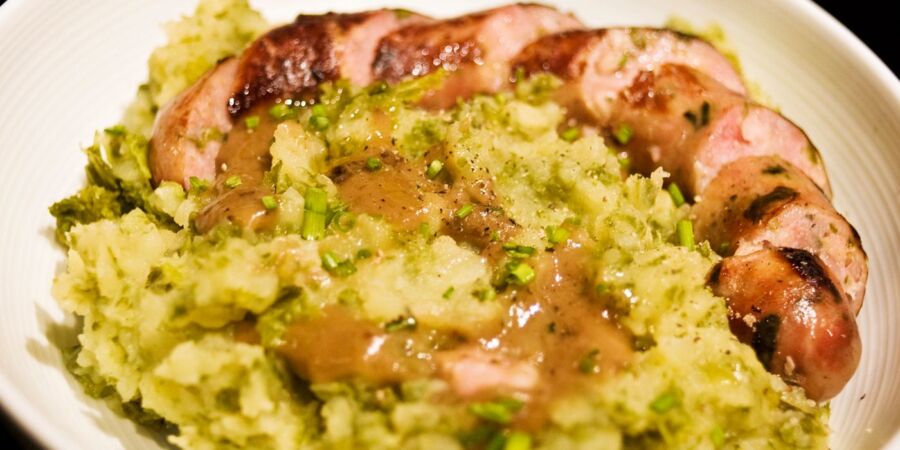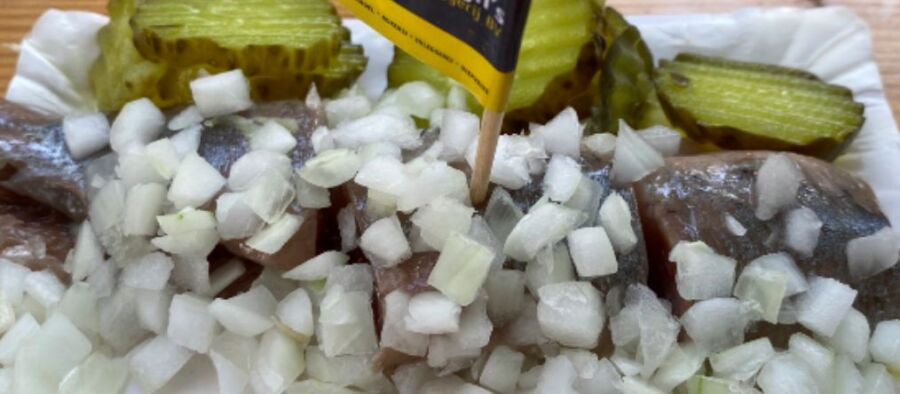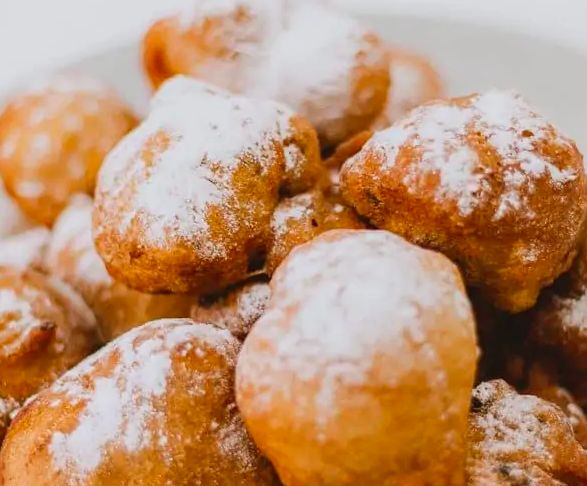
12 Traditional Dutch Dishes You Must Try: A Culinary Journey Through The Netherlands
Dutch cuisine might not have the global fame of its European neighbors, but don’t let that fool you. The Netherlands boasts a treasure trove of delicious traditional dishes that tell the story of this innovative seafaring nation. From hearty comfort foods that sustained generations through harsh winters to sweet treats enjoyed on cobblestone streets, Dutch food culture is a delightful discovery waiting to happen.
As someone who’s savored these delicacies both in bustling Amsterdam markets and cozy countryside kitchens, I’m thrilled to be your guide through the most mouthwatering traditional Dutch dishes. Whether you’re planning a trip to the Netherlands or simply want to explore new flavors, these 12 authentic dishes will transport you to the land of windmills, canals, and exceptional food.
Contents
- Savory Dutch Staples
- 1. Stamppot: The Ultimate Dutch Comfort Food
- 2. Erwtensoep (Snert): The Legendary Pea Soup
- 3. Haring (Herring): A Raw Delicacy
- 4. Bitterballen: The Perfect Dutch Bar Snack
- 5. Kroket: The Deep-Fried Dutch Delight
- 6. Kibbeling: Dutch-Style Fish and Chips
- Sweet Dutch Treats
- 7. Stroopwafel: The Caramel-Filled Wonder
- 8. Poffertjes: Fluffy Pancake Perfection
- 9. Appeltaart: Dutch Apple Pie Reinvented
- 10. Oliebollen: New Year’s Eve Doughnut Delights
- Uniquely Dutch Specialties
- 11. Hagelslag: Breakfast with Sprinkles
- 12. Pannenkoek: Not Your Average Pancake
- The Heart of Dutch Culinary Culture
- More Travel Guides
Savory Dutch Staples
1. Stamppot: The Ultimate Dutch Comfort Food

There’s nothing more quintessentially Dutch than stamppot. This hearty dish combines mashed potatoes with various vegetables—creating a satisfying meal that has warmed Dutch homes for centuries.
The most beloved version is boerenkool stamppot (kale mixed with mashed potatoes), typically served with a juicy rookworst (smoked sausage) and rich gravy. During chilly Dutch evenings, locals gather around steaming plates of this comfort classic, using the mashed potato mixture to create a small crater—affectionately called a “kuiltje”—for pooling the gravy.
What makes stamppot special isn’t just its simple ingredients but how it reflects the practical, no-nonsense Dutch approach to food: nutritious, filling, and deliciously straightforward. Other popular variations include zuurkoolstamppot (with sauerkraut) and hutspot (with carrots and onions).
2. Erwtensoep (Snert): The Legendary Pea Soup

Ask any Dutch person about their favorite winter food, and erwtensoep (snert) will likely top the list. This isn’t your average pea soup—it’s so thick that locals joke you should be able to stand a spoon upright in it!
Made with split peas, plenty of vegetables, and cuts of pork (including rookworst), this rich soup transforms into a meal that borders on being a stew. Traditionally served with rye bread and smoked bacon (katenspek), erwtensoep perfectly exemplifies the Dutch talent for creating maximum flavor from simple ingredients.
The true test of authentic erwtensoep? It should be even better the next day, after the flavors have had time to develop. Many Dutch families have recipes passed down through generations, with heated debates about whether carrots belong in a proper erwtensoep (traditionalists say no).
3. Haring (Herring): A Raw Delicacy

For the adventurous food explorer, raw herring is a must-try Dutch experience. Holding the fish by its tail, dipping it in raw onions, and taking a bite might seem intimidating, but this centuries-old tradition offers a surprisingly delicate flavor that locals adore.
The secret lies in the preservation process. Fresh herring is gutted, brined, and frozen according to strict regulations that date back to the 14th century when Willem Beukelszoon revolutionized the preservation technique. The result is a soft, slightly salty taste that’s refreshingly different from what you might expect.
For beginners, try a “broodje haring” (herring sandwich) from one of the many fish stalls (haringhandels) found throughout Dutch cities. Locals will tell you the best time to enjoy herring is during the “Hollandse Nieuwe” season beginning in June, when the year’s new catch arrives with much celebration.
4. Bitterballen: The Perfect Dutch Bar Snack

No Dutch drinking session is complete without a plate of bitterballen. These crispy, deep-fried balls with a creamy meat ragout center are the country’s favorite borrelsnack (bar snack), typically served with mustard for dipping.
Despite their small size, bitterballen pack an explosive flavor punch. Biting through the crunchy breadcrumb exterior reveals a piping hot, savory filling that pairs perfectly with Dutch beer. A word of caution from experience: always wait before biting in, as the molten interior has earned them the nickname “little cannonballs.”
The name comes from “bitter,” the traditional Dutch herbal liqueur they were originally served with. Today, you’ll find these addictive snacks in virtually every café and bar across the Netherlands, often arriving at tables in charming little wire baskets with toothpicks for easy sharing.
5. Kroket: The Deep-Fried Dutch Delight

Similar to bitterballen but in cylindrical form, the kroket (croquette) holds special status in Dutch cuisine. These deep-fried rolls filled with meat ragout represent the perfect grab-and-go meal, especially when served in a soft bread roll as a “broodje kroket.”
What makes the Dutch kroket unique is the contrast between its crispy outer shell and creamy, savory interior. FEBO, the famous Dutch fast-food chain with automat-style walls, has made these accessible 24/7 through their coin-operated food dispensers—a cultural institution in themselves.
Beyond the classic beef version, you’ll find wonderful variations like veal, shrimp, or cheese kroketten. Each has passionate devotees, with quality ranging from mass-produced varieties to gourmet versions at specialty shops like Van Dobben in Amsterdam, where they’ve been perfecting their recipe since 1945.
6. Kibbeling: Dutch-Style Fish and Chips

For seafood lovers, kibbeling offers a distinctly Dutch take on fried fish. These battered and deep-fried white fish pieces (traditionally made from cod) are seasoned with a special spice mix that sets them apart from other fried fish dishes around the world.
Served in paper cones with garlic or remoulade sauce for dipping, kibbeling makes for a delicious street food experience at Dutch markets. The name comes from “kabeljauwwang” (cod cheek), though today any white fish fillet might be used.
The magic is in the light, crispy batter and the fresh fish inside. For the most authentic experience, head to a coastal town like Scheveningen or a weekly market, where fishmongers often prepare kibbeling fresh before your eyes, serving it with a squeeze of lemon and that signature creamy sauce.
Sweet Dutch Treats
7. Stroopwafel: The Caramel-Filled Wonder

If the Netherlands had to choose one culinary ambassador, the stroopwafel would be a strong contender. These thin, round waffle cookies sandwiching a layer of sticky caramel syrup (stroop) have become global sensations—and for good reason.
The magic of a stroopwafel is best experienced when placed atop a hot cup of coffee or tea. The rising steam softens the caramel and gently warms the waffle, creating a gooey, melty texture that’s utterly irresistible. Originally created in Gouda during the late 18th century, stroopwafels were made from bakery scraps and sweetened with syrup because sugar was too expensive.
While factory-made versions are readily available worldwide, nothing compares to watching a skilled baker pour batter onto a waffle iron, split the thin waffle while still hot, spread the caramel, and press it back together—a mesmerizing street food performance at Dutch markets like Albert Cuyp in Amsterdam.
8. Poffertjes: Fluffy Pancake Perfection

These small, fluffy pancakes might look simple, but poffertjes inspire a special kind of joy among Dutch people of all ages. Made from a yeasted batter, they’re cooked in special dimpled pans that give them their characteristic puffy shape and soft center.
Traditionally served topped with powdered sugar and a small pat of butter, poffertjes are a beloved treat at markets, fairs, and festivals throughout the Netherlands. Watching skilled poffertjes makers flip dozens at once with specialized forks is part of the experience.
What makes these mini pancakes special is their light, spongy texture—quite different from American or French pancakes. While you can find them year-round, they’re especially popular during winter festivals, when the aroma of fresh poffertjes wafting from market stalls creates an irresistible sensory experience.
9. Appeltaart: Dutch Apple Pie Reinvented

Forget everything you know about apple pie—the Dutch version takes this classic to new heights. Taller, packed with chunky spiced apples, and encased in a sweet, cake-like crust, Dutch appeltaart is a revelation.
What sets it apart is the generous filling of firm apple pieces (never pureed) mixed with cinnamon, lemon juice, sugar, and sometimes raisins or nuts. The substantial crust holds everything together, creating a dessert that’s more robust than its American cousin.
Served with a dollop of freshly whipped cream (never ice cream), appeltaart is a staple in Dutch cafés. Locals often enjoy it with afternoon coffee, and the best versions come from recipes treasured for generations. For an authentic experience, visit Winkel 43 in Amsterdam, widely considered to serve one of the most iconic apple pies in the country.
10. Oliebollen: New Year’s Eve Doughnut Delights

These traditional Dutch doughnuts, literally translated as “oil balls,” are an essential part of Dutch New Year’s celebrations. Similar to doughnut holes but with a more substantial texture, oliebollen are deep-fried dough balls often studded with raisins or currants and dusted with powdered sugar.
The tradition dates back centuries, possibly originating as a way to line the stomach with oil before a period of fasting. Today, special oliebollen stands pop up throughout December, emitting the irresistible aroma of fresh doughnuts that signals the approaching year-end festivities.
Each family or bakery has their secret recipe, with heated debates about whether they should contain fruit or be plain. The perfect oliebol should be golden and crispy on the outside, fluffy and light on the inside, and never greasy—a delicate balance that has inspired annual national competitions to find the best in the country.
Uniquely Dutch Specialties
11. Hagelslag: Breakfast with Sprinkles

Yes, the Dutch eat chocolate sprinkles for breakfast, and once you try it, you’ll understand why. Hagelslag (literally “hailstorm”) refers to the chocolate, fruit, or anise-flavored sprinkles that Dutch people of all ages sprinkle liberally on buttered bread for breakfast or lunch.
This isn’t just a children’s treat—businesspeople in suits can be spotted enjoying this simple pleasure alongside their morning coffee. The butter is crucial, as it helps the sprinkles stick to the bread and adds a rich contrast to the chocolate.
What began in the early 20th century has become so embedded in Dutch culture that the average Dutch person consumes more than 14 pounds of hagelslag annually. For the authentic experience, try the pure chocolate varieties (puur, melk, or wit) from brands like De Ruijter or Venz, which must contain at least 35% cocoa to legally be called chocolate hagelslag.
12. Pannenkoek: Not Your Average Pancake

Dutch pancakes occupy a delicious middle ground between French crêpes and American pancakes—larger and thinner than American versions but slightly thicker than crêpes. What makes them special is their versatility, served with both sweet and savory toppings.
A traditional pannenkoek spans the entire plate and can be enjoyed for any meal. Sweet versions might feature stroop (syrup), powdered sugar, or fruits like apples and cherries. Savory varieties come topped with cheese, bacon, or vegetables—sometimes even combining sweet and savory elements, like the classic bacon and apple combination.
Pancake houses (pannenkoekhuizen) are popular family restaurants throughout the Netherlands, often located in scenic areas like forests or along canals. Many Dutch families have Sunday traditions of visiting their favorite pancake restaurant, where dozens of topping combinations cater to every taste.
The Heart of Dutch Culinary Culture
What makes Dutch cuisine special isn’t flashy techniques or exotic ingredients—it’s the emphasis on quality, simplicity, and gathering together. These 12 dishes represent more than just food; they’re windows into Dutch history, geography, and values.
From the seafaring influence evident in herring and kibbeling to the agricultural bounty showcased in stamppot, each bite tells a story of a resourceful nation that has always had a practical relationship with food. The sweet treats reveal the Dutch sweet tooth and talent for transforming simple ingredients into exceptional delights.
Whether you’re planning a trip to the Netherlands or want to recreate these flavors at home, exploring Dutch cuisine offers a delicious way to connect with this fascinating culture. So grab a stroopwafel, enjoy it with your coffee, and experience a small taste of Dutch gezelligheid (coziness) wherever you are.
What traditional Dutch dish would you most like to try? The deep-fried comfort of bitterballen, the sweet indulgence of poffertjes, or perhaps the adventurous raw herring? Whatever you choose, these authentic flavors promise a culinary journey you won’t soon forget.



